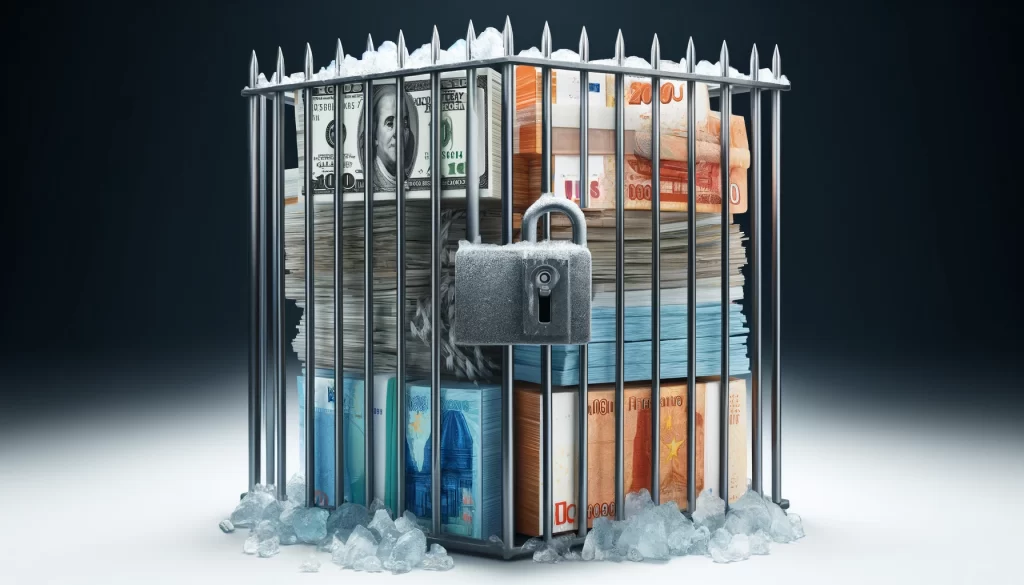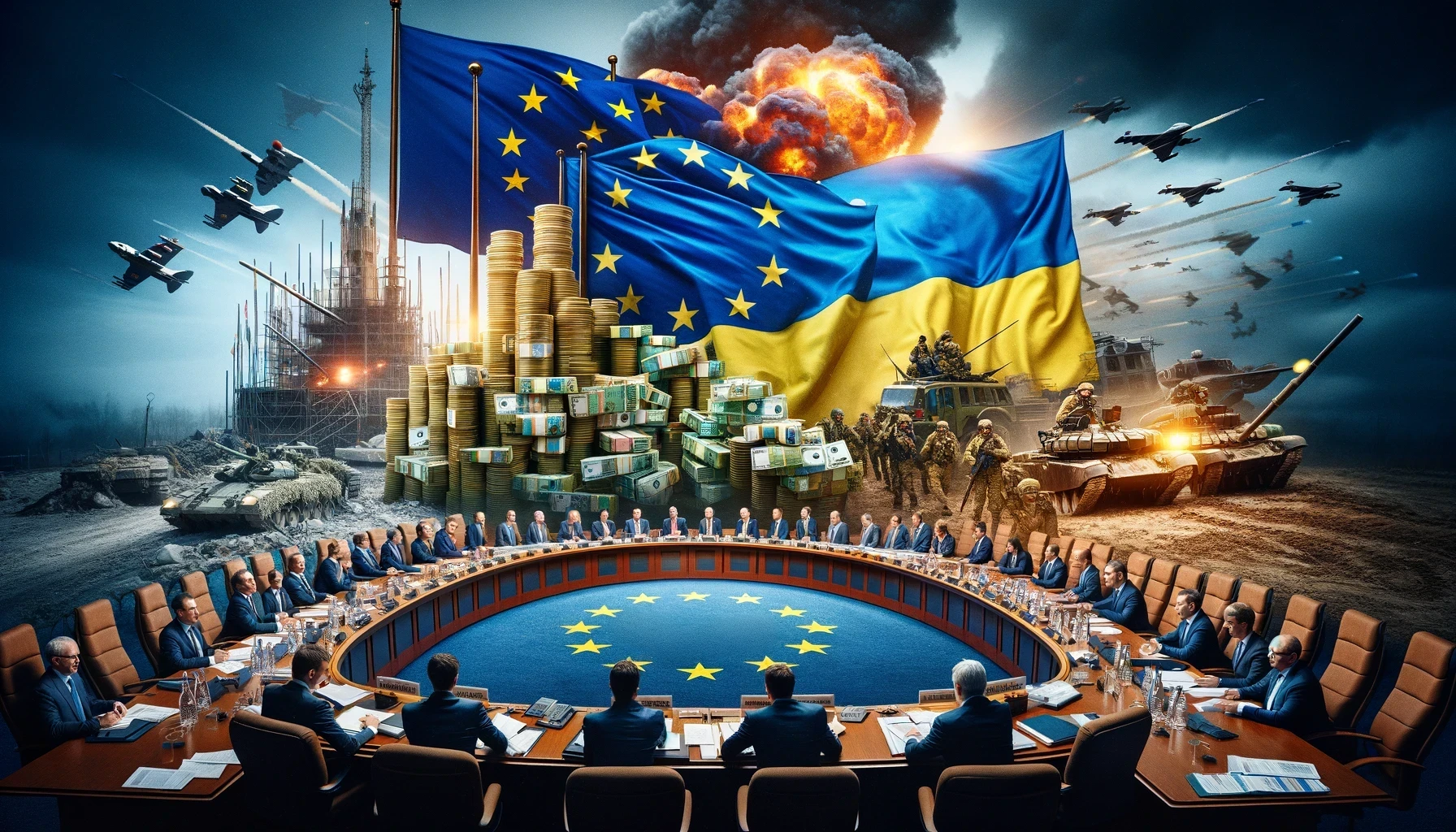The European Union (EU) has approved a plan to utilize profits from frozen Russian assets to support Ukraine and its military efforts. This decision comes in response to Russia’s full-scale invasion of Ukraine in February 2022. The EU will allocate up to $3.25 billion from the interest earned on these assets.
Czech Republic Minister of Foreign Affairs, Jan Lipavský, stated, “Russia must pay for its war damages,” while announcing the monetary amount on the social media platform X.
The European Council sanctioned the release of these funds after reaching a consensus two months prior. This action aims to aid Ukraine amidst the ongoing conflict and its associated humanitarian crisis. The funds will also assist in the country’s long-term rebuilding efforts.

However, the decision has faced criticism. Kirill Logvinov, head of Russia’s permanent mission to the EU, accused the EU of “elevating theft to the rank of instruments of its foreign policy.” Logvinov warned of unpredictable consequences for the eurozone and the investment climate.
The Biden administration has encouraged the EU to utilize the frozen Russian assets for Ukraine. Some opponents question the legality of this move and worry about potential retaliations, such as Moscow seizing European holdings in Russia.
The EU’s approach to use only the profits, rather than the assets themselves, aims to sidestep legal complications. Anders Ahnlid, who led the EU’s working group on frozen assets, explained, “Those windfall gains that amount to between 2 and 4 billion euros per year could be used for Ukraine’s reconstruction without interfering with international law.”

Since the invasion, the EU and its allies have immobilized approximately $282 billion in Russian Central Bank assets, with over two-thirds held within the EU. The EU plans to use 90% of the net profits from these assets for military support to Ukraine, with the remainder designated for defense infrastructure and reconstruction.
In the United States, President Biden recently signed the REPO for Ukrainians Act, enabling the transfer of Russian sovereign funds to aid Ukraine’s reconstruction. A bipartisan group of senators is urging the administration to implement this law ahead of the upcoming G7 meeting in June.
This initiative marks a significant financial commitment by the EU and its allies to support Ukraine amidst the ongoing conflict.
This article is based on the following article:
https://www.npr.org/2024/05/22/1252872978/russia-assets-aid-ukraine-eu-war-sanctions

Background Information
The Russia-Ukraine War
Origins and Causes:
The conflict between Russia and Ukraine has deep historical roots. Tensions escalated dramatically in 2014 when Russia annexed Crimea, a region of Ukraine, following a controversial referendum. This move was widely condemned by the international community. The annexation was preceded by the Euromaidan protests in Ukraine, which led to the ousting of the pro-Russian Ukrainian President Viktor Yanukovych. Pro-Russian separatist movements in Eastern Ukraine’s Donetsk and Luhansk regions further fueled the conflict, leading to a war that continues to this day.
Recent Escalation:
In February 2022, Russia launched a full-scale invasion of Ukraine, marking a significant escalation in the conflict. This invasion was condemned globally and led to severe economic sanctions against Russia by Western nations and their allies.
Economic Sanctions on Russia
Definition and Purpose:
Economic sanctions are penalties imposed by one country (or group of countries) on another, often to influence political or economic behavior. Sanctions can include trade barriers, tariffs, and restrictions on financial transactions.
Sanctions on Russia:
Since the annexation of Crimea in 2014 and especially after the 2022 invasion, the EU, the United States, and other allies have imposed comprehensive sanctions on Russia. These sanctions aim to weaken Russia’s economy and pressure the country to cease its aggressive actions. Measures have included freezing Russian assets abroad, banning trade in certain goods, and restricting access to international financial systems.
Frozen Assets
What Are Frozen Assets?
Frozen assets refer to financial assets that are temporarily immobilized by authorities. This can include bank accounts, real estate, stocks, and other financial instruments. Freezing assets prevents the owner from accessing or moving them, effectively neutralizing their financial power.
Russian Assets Frozen by Sanctions:
As part of the sanctions, approximately $282 billion in Russian Central Bank assets have been frozen by the EU, the United States, and other allies. These assets are held in international financial institutions and are not available for use by Russia.
The European Union (EU)
Structure and Purpose:
The European Union is a political and economic union of 27 European countries. It was established to promote economic cooperation, ensure free movement of people, goods, services, and capital, and maintain common policies on trade, agriculture, and regional development. The EU has its own institutions, including the European Commission, the European Parliament, and the European Council.
EU’s Role in the Conflict:
The EU has been a significant actor in responding to the Russia-Ukraine conflict. It has imposed sanctions, provided humanitarian aid, and supported Ukraine politically and economically. The decision to use profits from frozen Russian assets to fund Ukraine’s military is part of the EU’s broader strategy to assist Ukraine while maintaining international legal standards.
The REPO for Ukrainians Act
Overview:
The REPO for Ukrainians Act is a U.S. law that allows the transfer of Russian sovereign funds to Ukraine to support its reconstruction. This law is part of broader U.S. efforts to aid Ukraine in its recovery from the war and to maintain pressure on Russia.
Implications:
The Act demonstrates the commitment of the United States to support Ukraine. It provides a legal framework for using frozen Russian assets to fund reconstruction, aligning with similar efforts by the EU.
Key Figures
Jan Lipavský:
Jan Lipavský is the Minister of Foreign Affairs of the Czech Republic. He has been vocal in supporting Ukraine and advocating for Russia to be held accountable for its actions through measures like the use of frozen assets.
Kirill Logvinov:
Kirill Logvinov leads Russia’s permanent mission to the EU. He represents Russia’s interests and has criticized the EU’s actions, labeling them as theft and warning of potential retaliatory measures by Russia.
Anders Ahnlid:
Anders Ahnlid is a Swedish diplomat who led the EU’s working group on using frozen Russian assets. He has played a key role in formulating strategies to utilize these assets within the bounds of international law.

Debate/Essay Questions
- Is it ethical for the EU to use profits from frozen Russian assets to support Ukraine’s military efforts? Why or why not?
- What are the legal implications of the EU’s decision to utilize these funds, and does it set a dangerous precedent for future international relations?
Please subscribe to Insight Fortnight, our biweekly newsletter!
